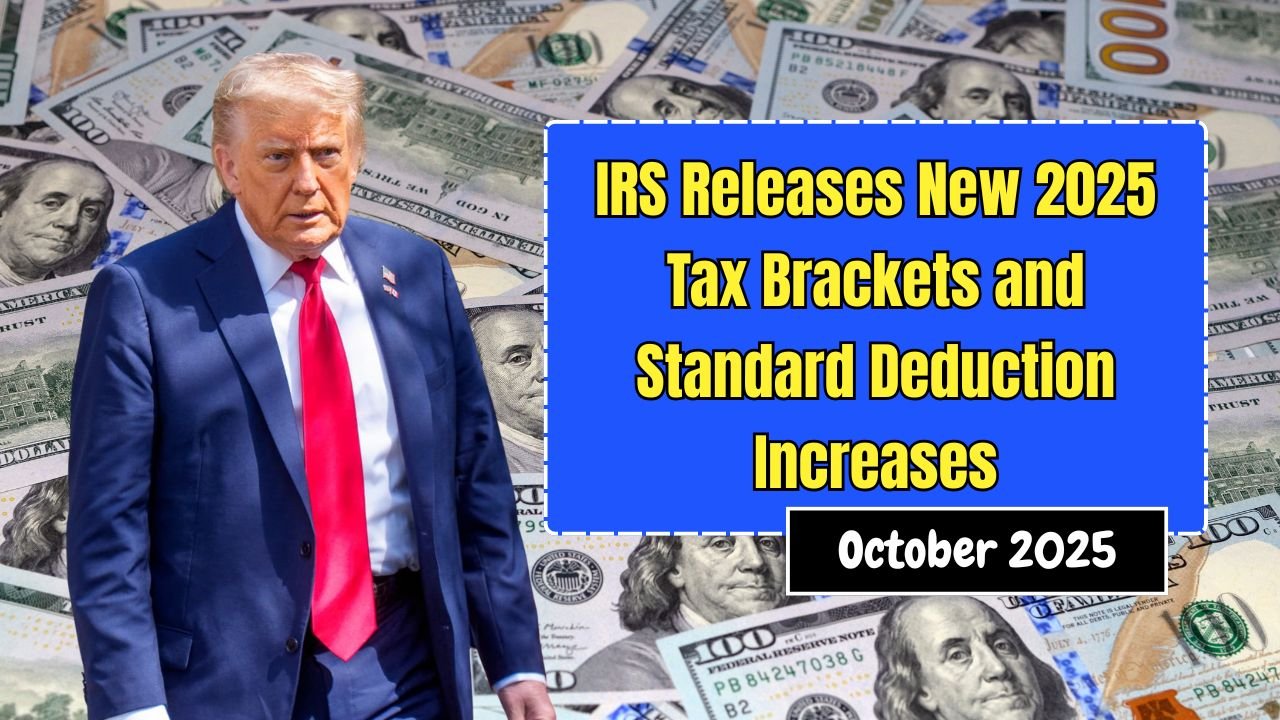The IRS has officially released its 2025 tax brackets and standard deduction increases, bringing the biggest set of tax updates in nearly a decade.
Thanks to the newly passed “Big Beautiful Bill”, several provisions from the 2017 tax overhaul have been made permanent, while introducing fresh relief measures for seniors, working families, and service industry employees.
These new adjustments will apply to 2025 tax returns filed in 2026, and they are expected to lower effective tax rates for millions of Americans.
Why These Changes Matter
Each year, the IRS updates tax thresholds to reflect inflation and prevent what’s known as “bracket creep,” where rising wages push taxpayers into higher tax brackets even if their purchasing power hasn’t increased.
The 2025 changes are more significant than usual because they lock in the 2017 Trump-era tax cuts, make higher deductions permanent, and add targeted new benefits for seniors and service workers. This means taxpayers will enjoy more predictable and potentially lower taxes for years ahead.
Key Tax Bracket and Deduction Updates
The marginal tax rate structure remains the same at 10%, 12%, 22%, 24%, 32%, 35%, and 37%, but income thresholds for each bracket will rise due to inflation indexing. That means most taxpayers will keep more of their income before moving into higher tax brackets.
Updated Standard Deductions for 2025
Here’s where most taxpayers will see a direct benefit.
| Filing Status | New 2025 Deduction | Old Deduction (Pre-Bill) |
|---|---|---|
| Married Filing Jointly | $31,500 | $30,000 |
| Single | $15,750 | $15,000 |
| Head of Household | $23,625 | $22,500 |
These new deduction levels are part of the “Big Beautiful Bill” and set a higher baseline for future inflation-based adjustments.
Expected Standard Deductions for 2026
| Filing Status | 2026 Deduction | Percent Change |
|---|---|---|
| Married Filing Jointly | $32,200 | +2.2% |
| Single | $16,100 | +2.2% |
| Head of Household | $24,150 | +2.2% |
The moderate increase in 2026 reflects how much of the adjustment has already been front-loaded in 2025.
New and Expanded Tax Breaks
Estate Tax Exclusion
The federal estate tax exemption will rise to $15 million in 2026, up from $13.99 million in 2025. This allows family-owned farms and small businesses to pass down more assets without triggering federal estate taxes.
Earned Income Tax Credit (EITC)
For families with three or more children, the maximum EITC increases to $8,231 in 2026 (up from $8,046 in 2025). This boost helps low- and middle-income working families keep more of their income.
New Senior Deduction
Starting in 2025, taxpayers aged 65 or older will qualify for a new $6,000 federal deduction. Married couples where both spouses qualify can claim $12,000 total.
This deduction phases out for incomes above $75,000 (single) or $150,000 (joint). It provides meaningful relief for older Americans, especially those still paying taxes on Social Security income.
Tax-Free Tips for Service Workers
In a landmark change, tips will no longer be taxed as federal income starting with the 2025 tax year.
- Applies to both cash and electronic tips up to $25,000 annually.
- Workers must still report tips for Social Security and Medicare purposes.
This update gives millions of service industry workers—from servers to salon professionals—an immediate boost in take-home pay.
Summary of Key Changes
| Category | 2025 Updates | 2026 and Beyond |
|---|---|---|
| Marginal Tax Rates | 10%–37% unchanged | Same, with inflation adjustments |
| Standard Deduction (Married) | $31,500 | $32,200 |
| Standard Deduction (Single) | $15,750 | $16,100 |
| Head of Household | $23,625 | $24,150 |
| Estate Tax Exclusion | $13.99M | $15M |
| Senior Deduction | New $6,000 | Ongoing |
| Tax-Free Tips | Up to $25,000 | Permanent measure |
The IRS’s 2025 tax updates bring some of the most taxpayer-friendly changes in recent years. With higher deductions, permanent tax cuts, senior relief, and tip exemptions, millions of Americans are set to benefit.
These reforms strike a balance between fairness and fiscal responsibility, ensuring that workers, families, and retirees alike have more money in their pockets heading into 2026.
FAQs
When do these changes take effect?
They apply to 2025 tax returns filed in 2026, though planning for the new brackets and deductions starts immediately.
Will everyone benefit from the higher standard deduction?
Yes. Most filers, especially those who do not itemize deductions, will pay less tax or see higher refunds due to larger standard deductions.
Are tips completely tax-free now?
Yes, up to $25,000 per year in tips are exempt from federal income tax, though they remain subject to Social Security and Medicare contributions.



